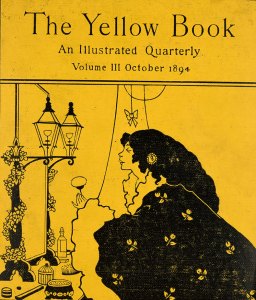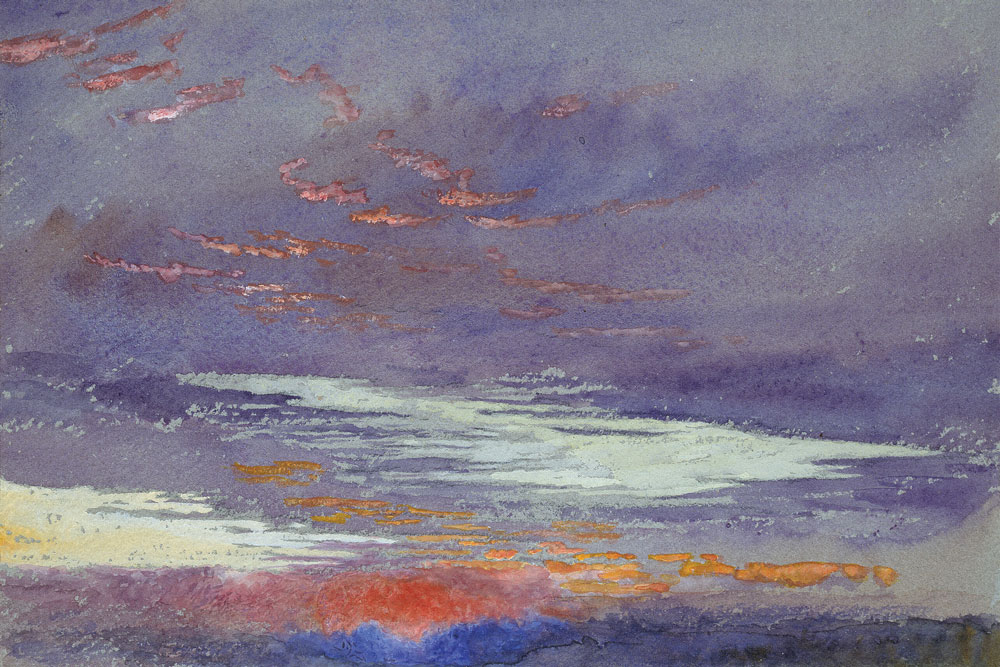From the November 2023 issue of Apollo. Preview and subscribe here.
Colour can shock. When Elizabeth Barrett Browning saw the life-sized Tinted Venus in John Gibson’s studio in 1854 she said she had ‘seldom, if ever, seen so indecent a statue’. Gibson had carved it from Carrara marble, then added a layer of wax tinted with warm flesh tones, colouring the lips pink, the eyes blue and the hair a golden blonde. Was this innovation an erudite nod to the polychromatic sculpture of antiquity? Or was the effect too real – did it, as some commentators feared when it was exhibited in 1862, verge on the salacious? Displayed in ‘Colour Revolution’ at the Ashmolean Museum, Gibson’s Tinted Venus remains a disquieting object.
This currency makes for a hugely engaging exhibition, alive with objects that surprise, delight, disturb or transfix with fascinated horror. Curators Charlotte Ribeyrol and Matthew Winterbottom have an eye for the thought-provokingly grotesque: a section on colour and seduction, for example, includes a necklace made from the heads of hummingbirds, mounted like tiny hunting trophies, beaks gilded and eyes replaced by red gemstones. Choices such as these expose rifts between ‘them’ and ‘us’ and invite reappraisal of not only the Victorian frame of mind but also our own reactions.
Porcelain vase decorated with a beetle (1872), Christopher Dresser for Minton & Co. Ashmolean Museum, Oxford. Photo: © Ashmolean Museum

‘Colour Revolution’ has an ambitious agenda which it pursues with gusto: to show how crucial powerful colours were to Victorian art, design and fashion and to explore their cultural significance. It begins with a theatrical flourish: the visitor enters through a gloomily-lit lobby with Gustave Doré’s nightmarish images of London on the walls and dominated by a black mourning dress that belonged to Queen Victoria, then steps into the first gallery and a colourful dawn in the form of a study by John Ruskin of purple clouds streaked with scarlet. Ruskin, who exhorted his readers to pay close attention to the colours of nature, championed J.M.W. Turner as one of the greatest colourists. A painting by his hero of the mouth of the Grand Canal in Venice, on loan from the Metropolitan Museum of Art, confirms his opinion with its shimmering, watery reflections of azure and gold.
Strong colours were not only to be found in nature – or abroad – but also in the past. A passion for the art, architecture and legends of the Middle Ages shaped Victorian culture, and the curators show various ways in which artists and designers repurposed the jewel-like reds, greens and blues they saw preserved in medieval manuscripts and stained-glass windows. The exhibition is particularly strong on the decorative arts: objects here range from A.W.N. Pugin’s tiles from the Medieval Court of the Great Exhibition of 1851 to the eye-popping chromatic excess of William Burges’s Great Bookcase (1859–62). The exhibition goes on to explore how artists, inspired by archaeological discoveries in the Middle East and North Africa, imagined scenes from the ancient past for a Victorian public; Edward Poynter’s vast, cinematic painting Israel in Egypt (1867), representing enslaved Israelites pulling a granite lion against a backdrop of pyramid and obelisk, is enlivened by his study of the distinctive hues of hieroglyphics and Egyptian stone.
At the heart of the exhibition, however, is technological advance. In 1856 a young student, William Henry Perkin, experimenting with coal tar, accidentally invented a potent violet dye. This first aniline dye, eventually named mauveine, was swiftly followed by magenta, solferino (a deep pink) and a rainbow of colours far more brilliant – or gaudy – than those derived from plants, creatures and minerals. Neither clothes, interiors nor works of art were ever the same again. The discovery led to what the curators call a ‘shopping revolution’ – a display including mauve silk satin boots and Berlin woolwork slippers captures the daily pleasure people took in new sartorial possibilities. Moral sensibilities were provoked, however, when traditionally white underwear burst into colour, with the press tutting over ‘tempestous petticoats’ and ‘chromatic torpedoes’ (coloured stockings), which they felt were more appropriate for prostitutes than ‘respectable’ women.
A volume of The Yellow Book from October 1894. Trinity College, Oxford

The exhibition’s final section introduces a different mood, with the colours of the fin de siècle. Artists associated with ‘art for art’s sake’ rejected conventional narrative in painting, seeking instead to evoke mood and atmosphere through subtle colour tones. The basilica that looms indistinctly out of the fog in James McNeill Whistler’s Nocturne: Blue and Gold, St Mark’s, Venice (1880) seems to occupy a different universe to the buildings of Turner’s earlier light-filled painting. The colour yellow, which became synonymous with the ‘decadence’ of the 1890s, is represented with Aubrey Beardsley’s provocative cover designs for The Yellow Book and Eugène Grasset’s haunting lithograph La Morphinomane (1897), of a young drug addict injecting her thigh against a sulphurous yellow background.
The dour widow’s weeds with which the exhibition begins are wittily bookended with a final section devoted to Loïe Fuller, the dancer celebrated for her skilful choreography incorporating lights with coloured filters. A film plays a recent evocation of Fuller’s astonishing ‘Serpentine Dance’, created in 1892, for which she manipulated diaphanous veils into fabulous shapes and illuminated them with a kaleidoscope of shifting colours.
The subject of ‘Colour Revolution’ is vast, but the curators bring clarity to the wide-ranging, complex themes they address. The impression is of an exhibition that brims with potential, not all of which is realised within the available room. It is no criticism to say that I left wanting more – on Victorian interiors, for example, and on artists’ adoption of artificial pigments. The curators, however, have met the challenge of limited gallery space by making every object count, and the way the show seizes the eye and the imagination and makes one impatient to discover what lies round the next corner is testament to its success.
‘Colour Revolution: Victorian Art, Fashion & Design’ is at the Ashmolean Museum, Oxford until 18 February 2024.
From the November 2023 issue of Apollo. Preview and subscribe here.



